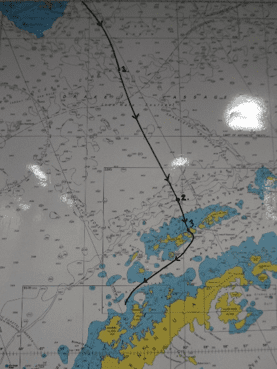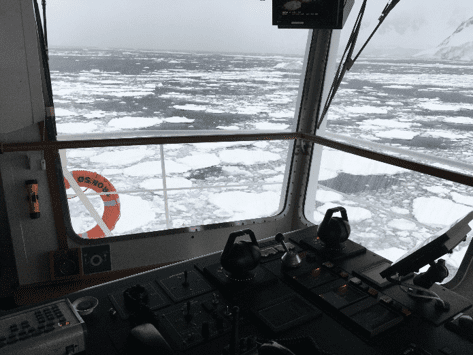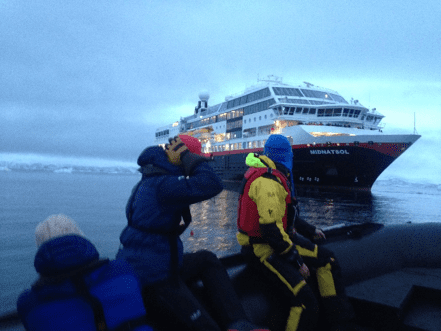Logistics and Delays
By Lizzie Meek
Blog number one. As part of our multiyear support agreement with UKAHT, Artefact Conservation Programme Manager Lizzie travelled to the Antarctic Peninsula to survey and assess artefacts at Bransfield House, the main building of ‘Base A’ at Port Lockroy.
Sometimes getting to Antarctica is as simple as getting on a plane in New Zealand and stepping off 5 hours later into sub zero temperatures. This year’s work expedition to Port Lockroy, (the British base on the Antarctic Peninsula managed by the United Kingdom Antarctic Heritage Trust) was a whole other story. Flights from NZ to Buenos Aires and then down to usuhuaia, before boarding the Ocean Edeavour (Quark Expeditions) for the voyage south across the Drake Passage and into the more sheltered waters of Bransfield and then the Gerlache Strait.
 Lizzie Meek/Antarctic Heritage Trust
Lizzie Meek/Antarctic Heritage Trust A week after departing Ushuaia, we made our first ttempt to get into the bay in which Port Lockroy sits. No-go! Sea ice had filled the bay making it impassable to the zodiacs which would transport us ship to shore, and even the Ocean Endeavour herself wasn’t able to nose a way through the icebergs.
 Sophie Rowe
Sophie Rowe North we sailed for a couple of days and through the generosity of various cruise ship companies were able to transfer onto the Fram and try again. South we sailed, into the bay, only to see….more ice! No go….so north we sailed, and once again transferred onto a southbound vessel, this time the Midnatsol. Surely this time we would make it…south we sailed into the bay, the anxious Port Lockroy team peering ahead through the bridge window….
 Antarctic Heritage Trust
Antarctic Heritage Trust only to see…ice! But this time with a small lead of open water, enough for the expedition team to give it a go.
 Lizzie Meek/Antarctic Heritage Trust
Lizzie Meek/Antarctic Heritage Trust Skippered by a couple of expert Phillipino crew, the zodiacs wove back and forth dodging bergy bits, sometimes coasting over flat pieces of ice before finding open water again. At 10.30 that night we finally made it ashore, after a delay of 5 days. (Image 5) We watched the golden lights of the Midnatsol disappear around the corner leaving the six of us to dig out the entrance to the hut, re-connect the LPG gas, start the solar power system up and then collapse into our bunks for our first night on the island.
Leaving the island 5 weeks later turned out to be oh so much easier…perfect weather, and the National Geographic Exploer able to come right into the bay and anchor about 50m from the island.
 Lizzie Meek/Antarctic Heritage Trust
Lizzie Meek/Antarctic Heritage Trust 

